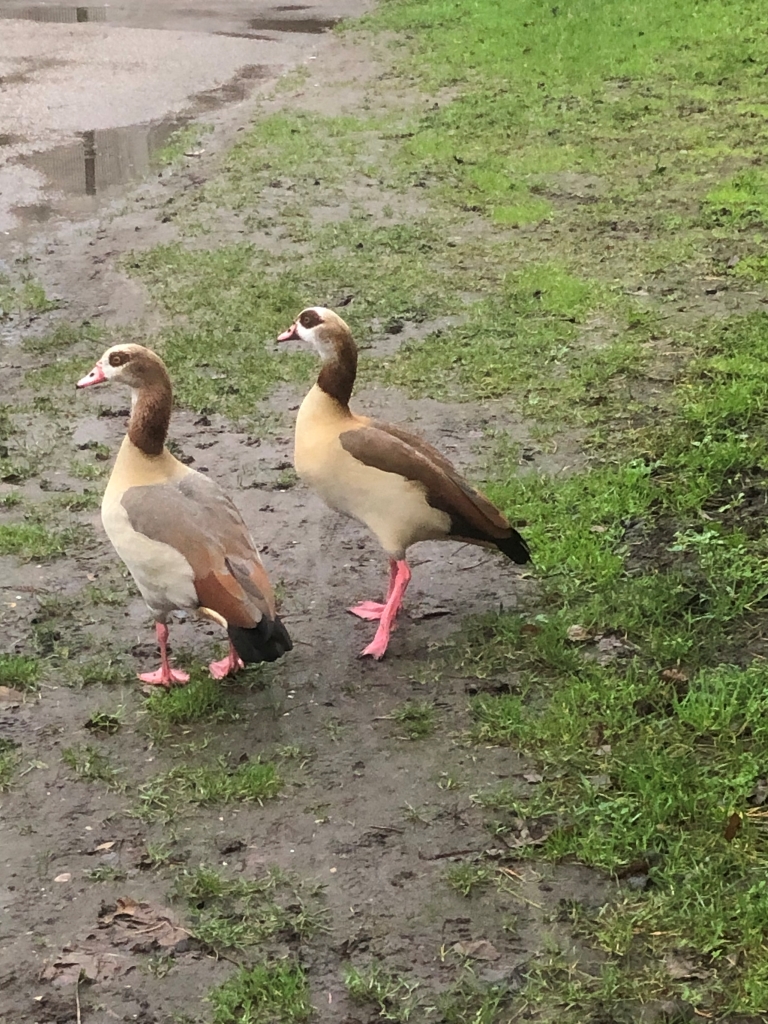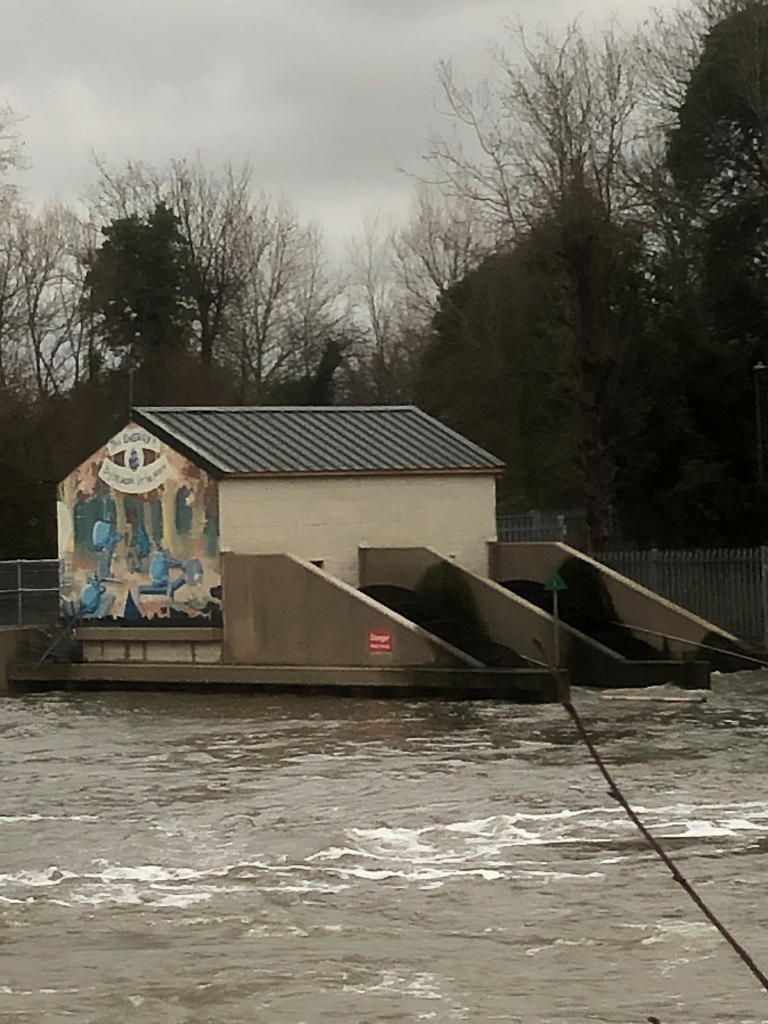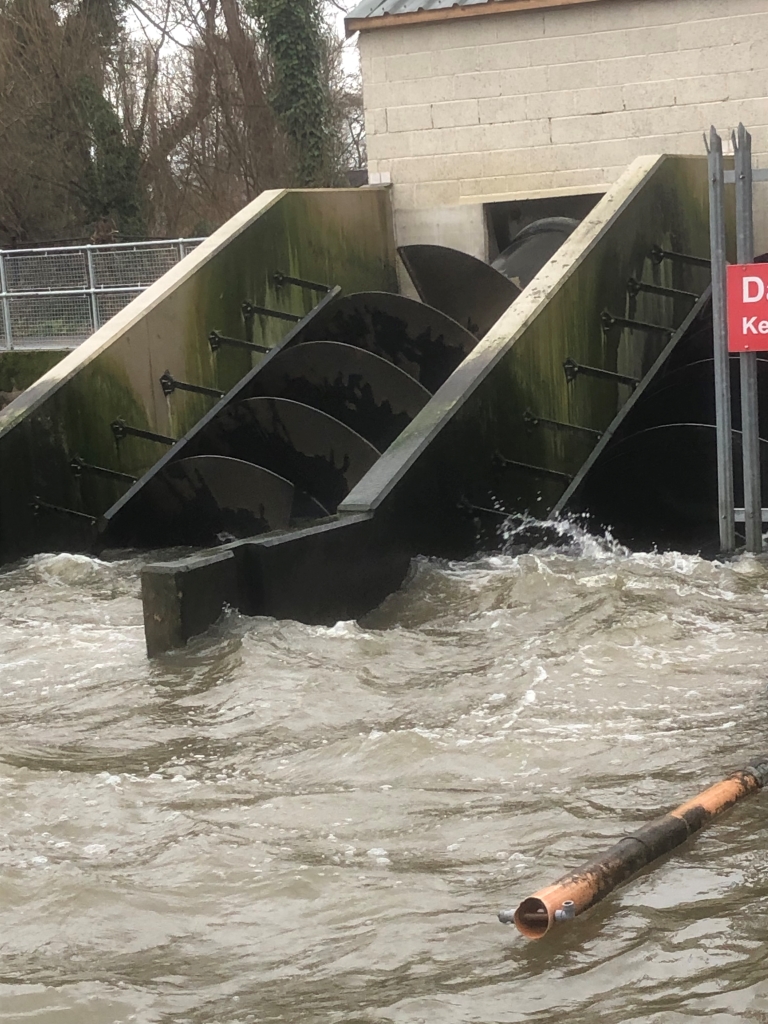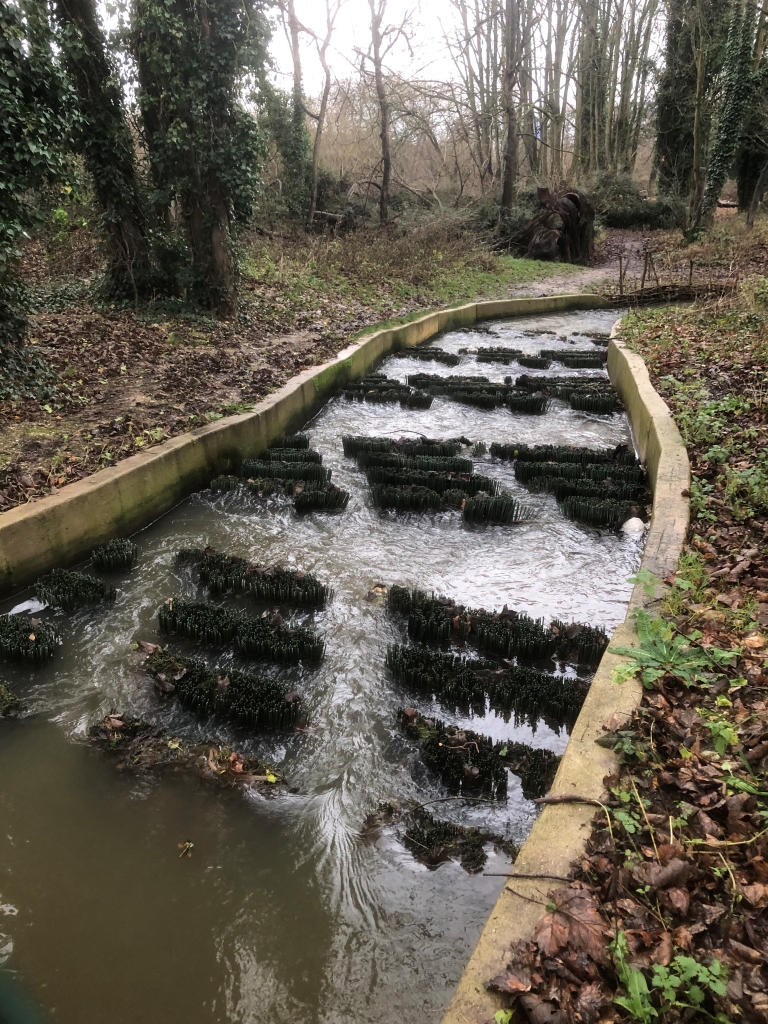The first field trip of 2023, on the morning of Saturday 7 January, was a visit to hear about the Reading Hydro project, preceded by a walk around the Thames-side parks. Despite initial rain and a forecast of worse to come, 14 members turned out, meeting in Hills Meadow car park. The walk, led by Jan Haseler, started out along the north bank of the Thames, heading under Reading Bridge towards Christchurch Meadow. Two Egyptian Geese were waiting by the bridge, looking as if they were hoping for food handouts. There was a brief pause to look at a Banksy-style picture, on the north-west side of the bridge, of a boy looking out of a window with a typewriter suspended below, a follow-up to the original Banksy picture on the wall of Reading Gaol of a prisoner with his typewriter escaping over the wall with the help of knotted sheets. The route lay across Christchurch Meadow to the new footbridge over the Thames. Following much recent rain, the river level was high and the currents were strong. There were a number of ferns on a wall on the south side of the bridge, including Wall Rue, small specimens of Hart’s-tongue Fern and a probable Spleenwort whose identity caused some discussion. The walk continued downstream on the southern bank of the Thames, then under Reading Bridge to King’s Meadow. There was a loud splash as a nearby Cormorant dived underwater. There were about ten Mute Swans on the closest stretch of the river and two of them battled against the current to approach, again in the apparent hope of food handouts. Two more Cormorants were perched at the top of a tree in the garden of Caversham Lock. On the right of the path was an impressive row of big London Plane trees. The last in the row had low branches with easy access to the characteristic spherical dangling seed containers. One was picked and opened up and shown to be full of densely packed seeds. On the left of the path was a Corkscrew Willow with dangling twisted branches. Lying amongst the vegetation on the river bank was a dead swan, perhaps a victim of bird flu. Inspection of buds on riverside trees revealed the plump green buds of Sycamore and the large brown sticky buds of Horse Chestnut, the latter with the remains of spiked seedcases and conkers on the ground. Yarrow was found in flower and three Moorhens scuttled off the grass and into the water. There was a brief diversion along the wooded bank of a ditch which crossed the meadow. Some of the Elder bushes had fresh new leaves already, but the catkins on the Hazels were not yet fully out. There followed a brisk walk back to Caversham Lock, over the Thames at the bridge above the weir and across to View Island.
Reading Hydro is located on a spit of land at the end of Caversham Weir. There the group were met by volunteer Anne Wheldon, who kindly gave a half hour talk about the project. The hydro scheme has two steel Archimedes screw turbines which are positioned at an angle of 22 degrees to the horizontal. As water falls into the top of the screw and starts to fall downwards, it generates rotational motion which, after being multiplied up by gears, is used to generate electricity. The amount of power generated is proportional to the head of water across the weir. Counter-intuitively, despite the river level being extremely high after all the recent rainfall, the generators were not running at full power. With the weir gates fully open, the drop in water level across the weir was reduced. Also, during the unprecedented drought last summer, when the Thames had been running at historically low levels, the Environment Agency had insisted that the hydro scheme was closed down for several months. When the scheme is running optimally, it is rated at 46 kW of electrical output. This is sold at a favourable price to the Thames Lido, which uses it to power its pumps and filtration systems, and to power the refrigeration systems in its café. A dedicated cable runs under the Thames to connect the two sites. The input flow to the turbines is screened to remove larger debris. Fish can pass safely down through the screw turbines. A fish pass allows migrating fish and eels to move upriver. Water flows into the fish pass from the channel which separates View Island from Hills Meadow. It flows down a steeper section which is broken up by many special bricks with vertical projections which create deeper pools and quiet eddies where the fish can rest on their way up. Water exits the fish pass near the bottom of the turbines. Caversham Weir already had a fish pass, but with its steep gradient and fast flow, it is more suitable for larger and stronger fish such as salmon.




Pictures by Tom Walker
